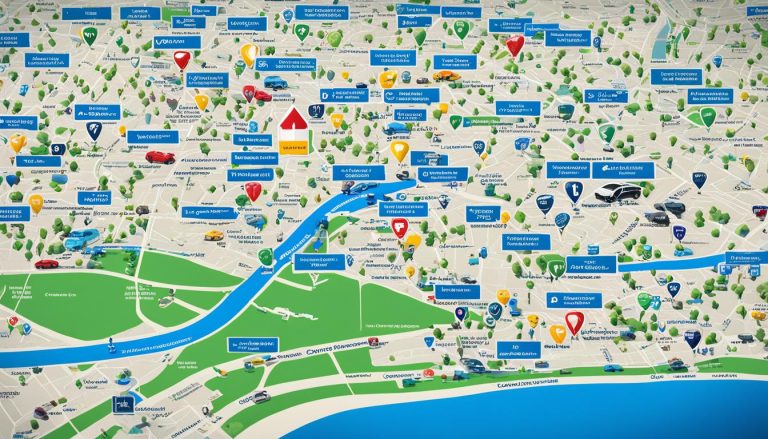Are you wondering when your next OAS payment will arrive in 2025? With rising living costs and the importance of budgeting in retirement, knowing the exact Old Age Security (OAS) payment dates is essential.
These government-provided benefits are a steady source of income that help Canadian seniors manage daily expenses, from groceries to healthcare. As someone planning or living through retirement, staying on top of your OAS schedule ensures you never miss a deposit or financial obligation.
Whether you’re already receiving OAS or planning your future income, understanding payment timelines, eligibility rules, and benefit amounts can help you make more informed financial decisions.
In this guide, you’ll find the full OAS payment calendar for 2025, eligibility requirements, benefit breakdowns, and more. Let’s walk you through everything you need to stay financially secure and on track with your OAS payments throughout the year.
What Is the Old Age Security (OAS) Pension?

Old Age Security (OAS) is a monthly pension funded by the Government of Canada, designed to support individuals aged 65 and older. Unlike the Canada Pension Plan (CPP), OAS does not require prior contributions during your working years. Instead, it’s paid from general tax revenue and is available to all eligible seniors regardless of employment history or retirement status.
To qualify for OAS, you must meet these basic conditions:
- Be 65 years of age or older
- Be a Canadian citizen or legal resident
- If living in Canada: Must have lived in Canada for at least 10 years since age 18
- If living outside Canada: Must have lived in Canada for at least 20 years after age 18
Work history or current employment does not affect your eligibility. Even if you’re still working full-time or part-time, you can still receive OAS benefits.
Here’s the confirmed OAS Payment Schedule for 2025:
| Month | Payment Date |
| July | 29 July 2025 |
| August | 27 August 2025 |
| September | 25 September 2025 |
| October | 29 October 2025 |
| November | 26 November 2025 |
| December | 22 December 2025 |
Understanding your eligibility for OAS is your first step toward dependable monthly income throughout retirement.
When Will You Receive OAS Payments in 2025?
OAS payments are issued monthly and typically fall in the final week of each month. For July 2025, the scheduled OAS deposit date is 29 July 2025. These payments are automatically sent either by cheque or more commonly through direct deposit into your bank account.
In cases where the payment date falls on a weekend or holiday, the deposit is usually made on the previous business day. To avoid unexpected delays, it’s wise to set up direct deposit through your My Service Canada Account for quicker access to your funds.
Here’s your next OAS payment date:
| Month | Payment Date |
| July | 29 July 2025 |
Many retirees align their rent, bill payments, and major expenses with these predictable dates. Knowing the exact timing of your OAS payment helps you plan monthly budgets and ensures you have the funds when needed.
How Much Can You Receive from OAS in 2025?

Your monthly OAS payment depends on your age, income, and the number of years you’ve lived in Canada after age 18. These amounts are reviewed quarterly and indexed to inflation to protect your purchasing power.
For July to September 2025, the updated maximum OAS payments are as follows:
| Age Group | Max Monthly Payment | Income Threshold |
| 65 to 74 | $734.95 | Less than $148,541 |
| 75 and over | $808.45 | Less than $154,196 |
The actual amount you receive may be lower if:
- You’ve lived in Canada for fewer than 40 years
- You choose to start OAS earlier without deferring
- Your net income is above $93,454 (OAS clawback threshold)
Income above this limit triggers a recovery tax, also known as the OAS clawback. If applicable, 15% of the excess income will be deducted from your payments monthly. It’s important to manage your income sources strategically to maximise your OAS benefits.
How Do You Get Your OAS Payments?
OAS payments can be received in one of two ways, direct deposit or by cheque. Most recipients choose direct deposit for reliability, speed, and security. Direct deposits are usually available early in the morning on the payment date.
To receive payments directly to your bank account:
- Log in to your My Service Canada Account
- Provide or update your banking details
- Choose your preferred deposit method
If you’re outside Canada, payments can be deposited into select international accounts. However, delays may occur due to banking processes in foreign countries.
Cheques may take longer and are at risk of being delayed or lost in the mail. For faster service, the government recommends using direct deposit to avoid missing or delayed payments.
What Should You Do If You Don’t Receive Your OAS on Time?

Sometimes your OAS payment may be delayed or not appear in your account. Common reasons include banking errors, processing delays, incorrect deposit details, or postal disruptions for mailed cheques. You should first check your My Service Canada Account to confirm the payment status.
If your OAS is late or missing:
- Wait at least 2 business days beyond the scheduled date
- Contact your bank to check for pending deposits
- Confirm that your direct deposit information is accurate
If the issue remains unresolved, contact Service Canada for assistance:
- Contact Number: 1-800-277-9914
- TTY: 1-800-255-4786
- Hours: Monday to Friday, 8:30 am to 4:30 pm (local time)
Act quickly if a payment is delayed, especially if you rely on OAS for essential expenses like rent or medications.
How Is OAS Different from CPP?
While both the Old Age Security and the Canada Pension Plan (CPP) provide retirement income, they operate under different rules and eligibility requirements. OAS is based on age and residency, while CPP is based on your contributions during your working life.
Key differences between OAS and CPP include:
- OAS does not require work contributions, while CPP is contribution-based
- CPP amounts depend on how much and how long you contributed
- OAS is funded through general tax revenue, and CPP is funded by payroll deductions
- You can receive both benefits simultaneously
For 2025, the maximum CPP benefit at age 65 is around $1,433 monthly, while the average new payment is approximately $808. Most Canadians will receive both OAS and CPP to supplement their retirement income.
How Can You Track and Manage Your OAS Payments?

Managing your OAS payments is easy with your My Service Canada Account. This secure online portal allows you to monitor your deposits, update your information, and adjust tax settings.
With your account, you can:
- View your next OAS payment date and amount
- Change direct deposit or mailing details
- Request tax deductions to manage year-end taxes
- Apply for GIS and other supplements if eligible
To access your account:
- Visit My Service Canada
- Log in using your GCKey or banking credentials
- Navigate to the “OAS/CPP” section
Being proactive helps you stay informed about changes and ensures uninterrupted OAS benefits month after month.
Are There Any Changes to OAS in 2025?
Yes, there are several important changes affecting OAS in 2025. These include updated payment amounts, new clawback thresholds, and inflation-based adjustments to help seniors cope with rising living costs.
Here are the highlights for 2025:
- Maximum monthly payment for age 65–74: $734.95
- Maximum monthly payment for age 75+: $808.45
- Clawback threshold increased to $93,454
- Full benefit eliminated above $151,668 (ages 65–74) and $157,490 (ages 75+)
The government has also expanded tools to help you plan, including the OAS Benefits Estimator, which calculates potential payment amounts based on your age, income, and residency years. These updates reflect the government’s commitment to ensuring retirement benefits remain relevant and valuable for all Canadian seniors.
Conclusion
Knowing your OAS payment dates and eligibility in 2025 is essential for managing your retirement finances with confidence. With the full schedule now confirmed and payments adjusted for inflation, you can plan your monthly expenses more accurately.
Whether you’re new to OAS or have been receiving benefits for years, keeping track of deposit dates, understanding how your income affects payments, and using tools like My Service Canada can help you make the most of this vital support.
As a cornerstone of Canada’s retirement system, OAS continues to provide steady income and peace of mind to millions of seniors across the country. Stay informed, stay organized, and enjoy the financial freedom that comes with understanding your entitlements.
FAQs
What time do OAS payments get deposited?
OAS payments are usually deposited early in the morning on the payment date. Direct deposits are faster than mailed cheques.
Can I receive OAS outside Canada?
Yes, if you’ve lived in Canada for at least 20 years after age 18, you can receive OAS even while living abroad.
Is OAS taxable in Canada?
Yes, OAS is considered taxable income. You can request monthly tax deductions through My Service Canada.
Can I defer OAS payments to increase them?
Yes, deferring OAS up to age 70 increases your monthly payment by 0.6% for each month delayed.
How do I apply for OAS if I wasn’t automatically enrolled?
You can apply online via My Service Canada Account or submit a paper application if you didn’t receive automatic enrolment.
What is the OAS clawback, and who does it affect?
The OAS clawback reduces your benefit if your income exceeds $93,454. You repay 15% of the excess amount.
Can I receive both OAS and GIS?
Yes, if your income is low enough, you may qualify for the non-taxable Guaranteed Income Supplement in addition to OAS.




